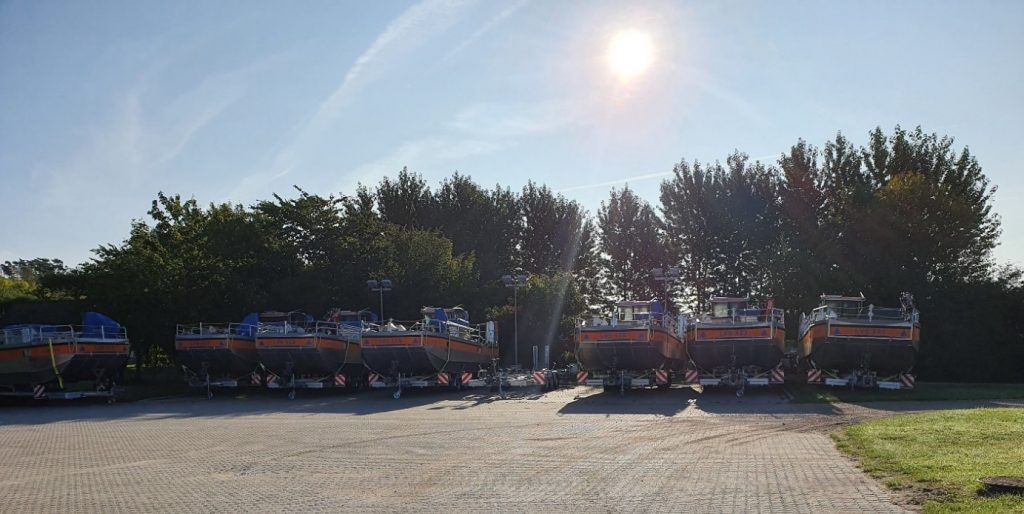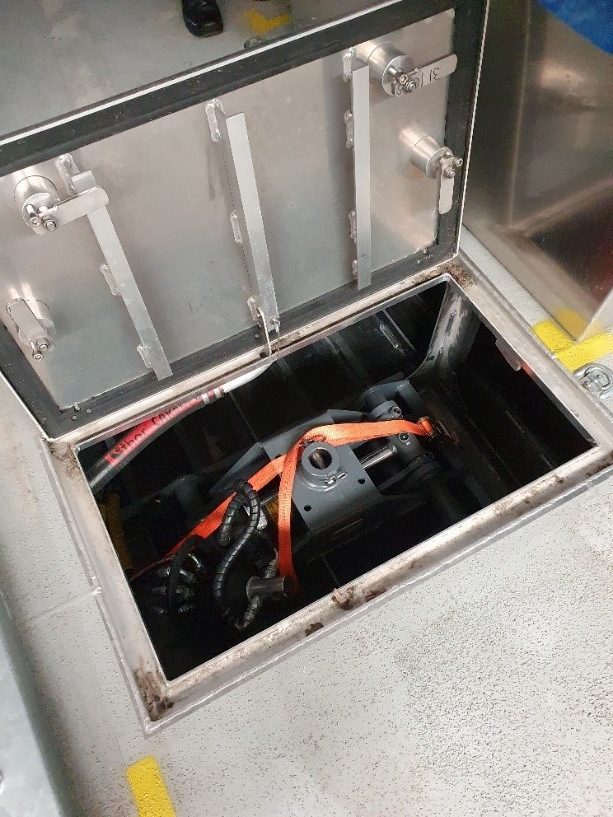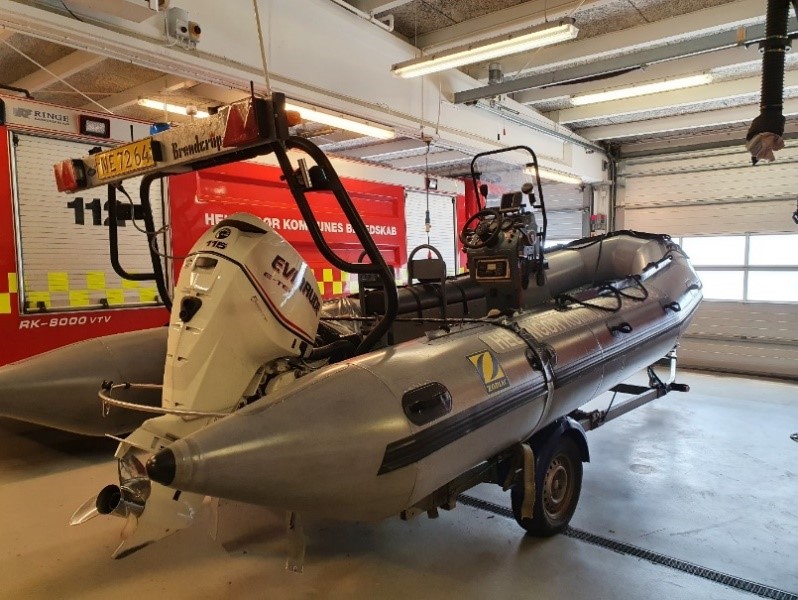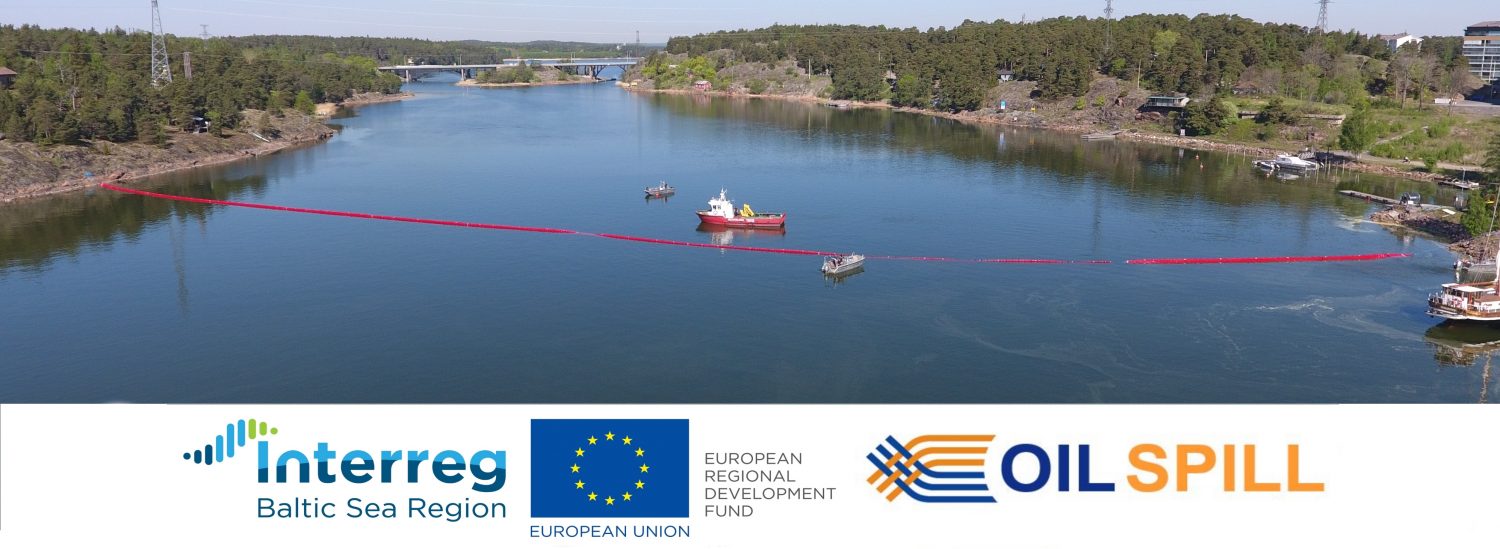Marine Environmental Preparedness in Denmark: DEMA, Municipalities and Harbors (2/3)
In this three-part blog series the roles of different stakeholders participating in the oil spill response in shallow waters and coastal areas in Denmark are explained. In this second article, the Danish Emergency Management Agency, Elsinore Fire Department as a representative of municipal authorities, and Brøndby harbor as an example of harbors are introduced.
Written by Kia Friis Petersen, Danish Civil Protection League
Danish Emergency Management Agency
Organization
The Danish Emergency Management Agency (DEMA) is a national rescue service with six centers across the country. Five of the centers are manned by officers, sergeants, and conscripts, and the sixth by officers, sergeants, and volunteers. They also have volunteers, who are former conscripts at the centers. In total, DEMA can activate up to 1,500 people and 500 in the reserves.

Ships and equipment
DEMA has five smaller boats which can be used for oil sampling and reconnaissance, and also for oil collecting to some degree. This year, 18 new shallow water vessels have been purchased. These vessels are equipped with oil skimmers, cranes, grabs, basins, and oil bags. The four smaller ships can carry up to 2,400 liters of oil and the larger ships up to 6,000 liters. The smaller ships can be transported in military airplanes, making them usable in e.g., Greenland or around the Baltic Sea.
Each fire and rescue center will have three ships that can be deployed quickly in the local area. The ships can be transported by trucks. Thus, they can be used in all parts of Denmark relatively quickly – compared to sailing as the top speed is 12 knots – if an oil spill requires more than the three ships appointed to one center. Each ship is manned by two to four people.
At all six centers, they have two types of oil booms: larger booms usable at coasts and smaller ones for lakes and streams. The large oil booms can be placed from the coast and then dragged out by the ships or held in place by manpower. DEMA also has different oil skimmers and sampling equipment.

Activation and role
DEMA can be activated by the Navy through the Maritime Assistance Service (MAS) or by the affected municipal, either through the environment department, local fire and rescue service, or the police. DEMA is activated if special equipment is needed or in the case of large spills that require many people and equipment. Since the Navy, municipality, or police will usually lead the operation, DEMA has an assisting role.
Elsinore Municipality Fire Department

Organization
The Elsinore Municipality Fire Department is a public body. It is one of 28 municipal fire and rescue services in Denmark. The fire department’s oil and chemical response in coastal areas is coordinated with three other municipalities, so they cover a more significant part of the North Zealandic coast under one joint plan. This article focuses on Elsinore Municipality Fire Department. The fire department’s staff consists of full-time and part-time employees, along with 30 volunteers. If an oil spill has or threatens to hit the coast, the crisis staff will be activated. The staff will coordinate the response with the affected municipalities. At the operation site, an incident commander will coordinate the practical part of the response.
Ships and equipment
Elsinore Municipality Fire Department has an RHIB (rigid-hull inflatable boat), which can be used for different sea responses, including monitoring of oil spills. Besides, they have oil booms that can be placed from the coast or dragged by other boats.
If an acute oil spill occurs, the part-time staff will respond. They can be assisted by the municipality’s employees if necessary. In the case of a more massive spill, the volunteers can assist as well. Furthermore, if the spill is placed far out in the sea but threatens to drift ashore, the volunteers can also serve as first responders as longer response time is allowed.
Activation and role
The maritime environmental preparedness in the four municipalities can be activated through three different channels: MAS, the national emergency number, or directly by a citizen informing the municipalities. Either way, the fire and rescue service in the affected municipality will be activated. They will then respond to oil spills at the coast and in harbors. It is the municipalities as authorities that are responsible for the clean-up. However, the task is partly handed over to the fire and rescue services, which have the 24-hour service, making them easier to contact and mobilize. Thus, it is a coordinated response between the municipality and fire and rescue service from the initial response to the cleaning and disposal of the oil.
Brøndby Harbour

Organization
Brøndby Harbour is a private yachting harbor. It was built in 1979, and with around 550 berths, it is classified as a medium-sized yachting harbor. However, the staff only includes three permanently employed and a few extra people in the peak season.
Ships and equipment
The harbor has oil booms that are stored in two different depots so that they can be used quickly in all parts of the harbor. In addition, the harbor has smaller boats, two barges, and a motor-driven raft, which can be used to place the oil booms. The booms can be placed around the spill or at the harbor’s entry to avoid the spill spreading – from the harbor towards the sea or vice versa. If an oil spill happens on land, the spill will fall to a trench built along the harbor to avoid the oil running into the sea. There is a filter system in the trench, which will ensure that the water is cleaned from the oil before it runs into the sea.

Activation and role
If an oil spill happens, the harbor master oversees the operation. Typically, it will be the users of the harbor who discover the oil spill and contact the harbour master. He will then contact the relevant authorities if necessary, as it is the local fire and rescue service that handles large spills that require using the oil booms. The harbor master will also contact a company with a vacuum tanker to collect the oil if the fire and rescue service is unable to collect it. The harbour has also a flushing system, which is used to empty boat’s septic tanks. However,the same system can also be used to collect small amouns of oil. In this way, the harbor personnel can handle most oil spills on their own as the larger accidents happen only about four times a year.
Get transferred to the last part, here.

Leave a Reply